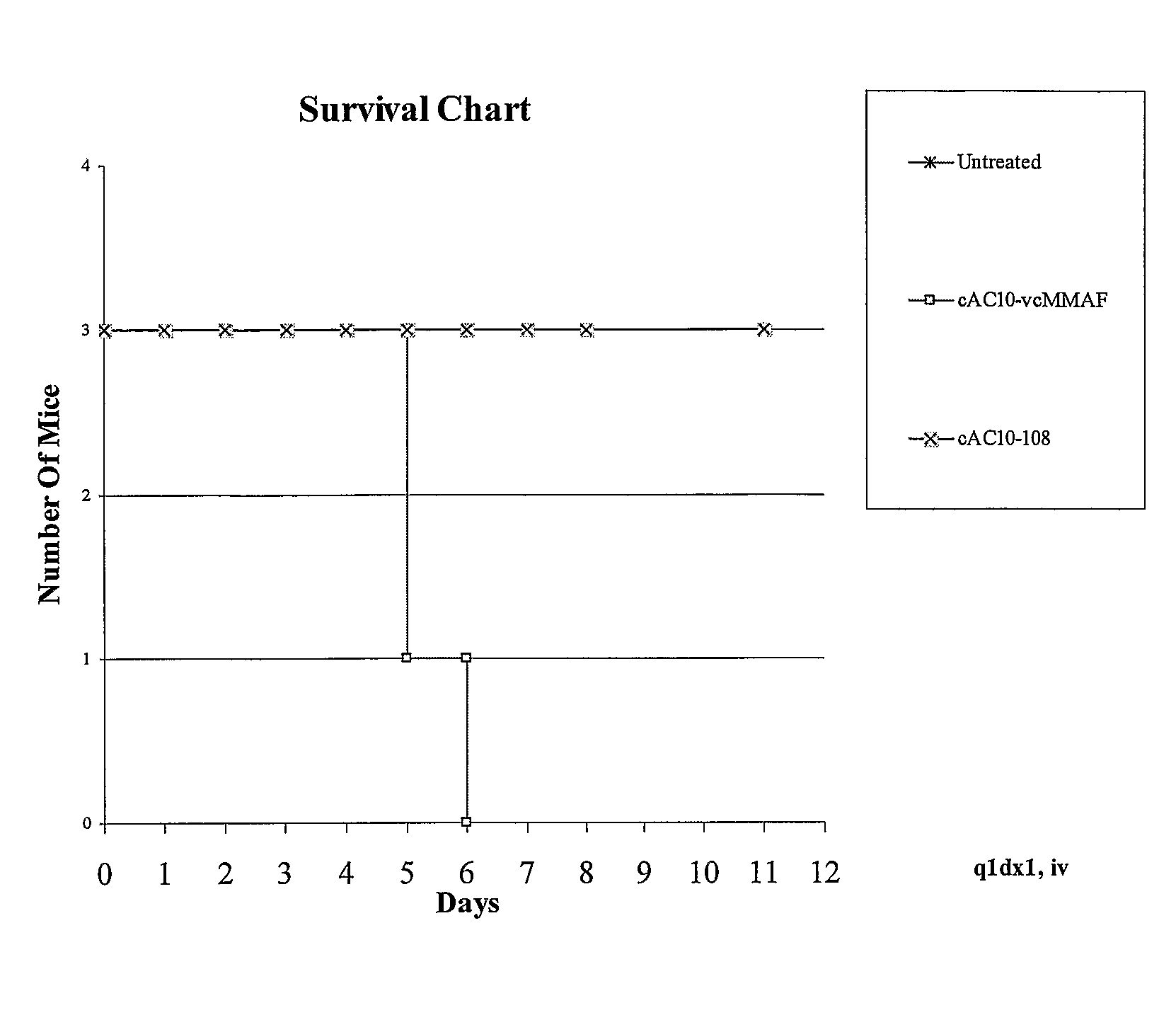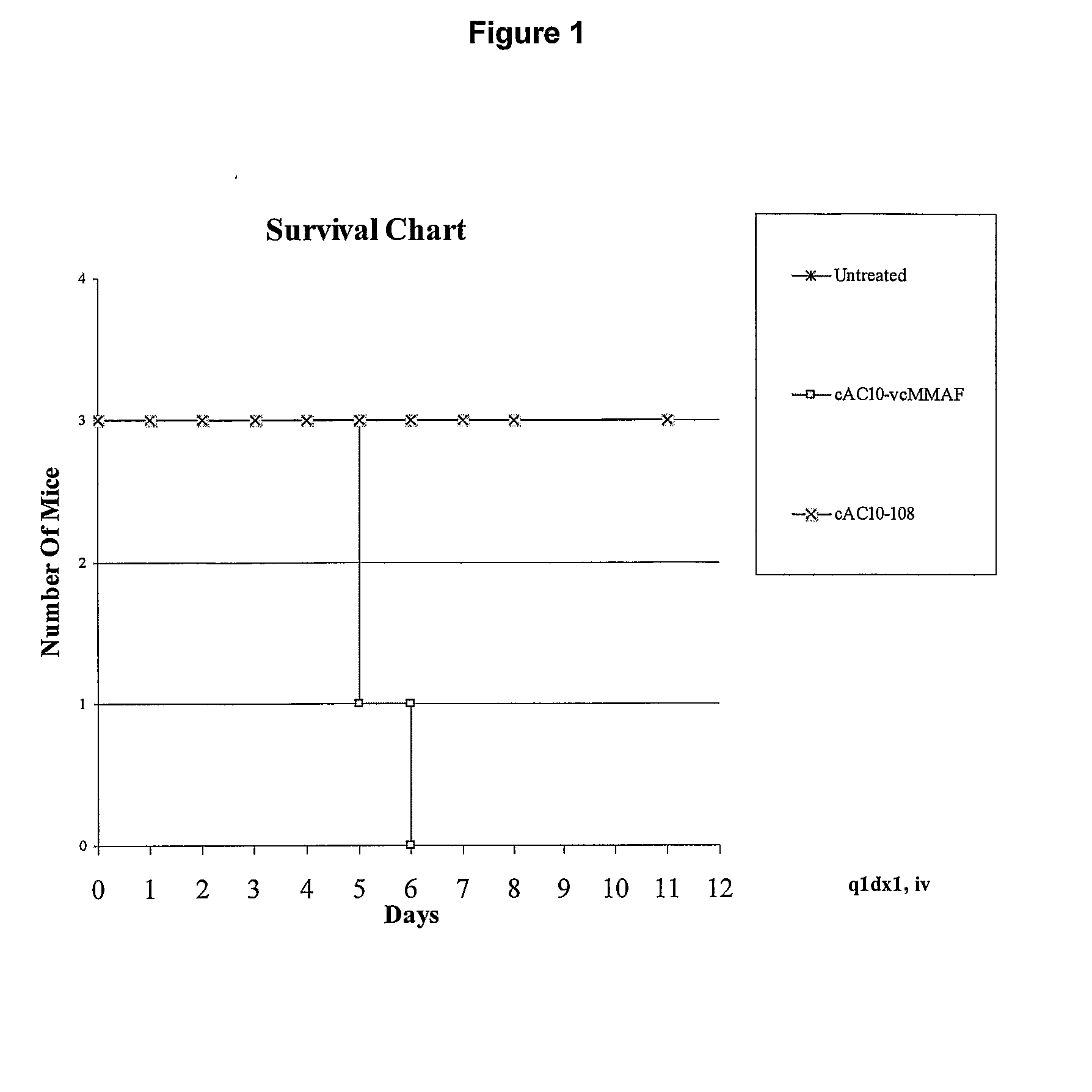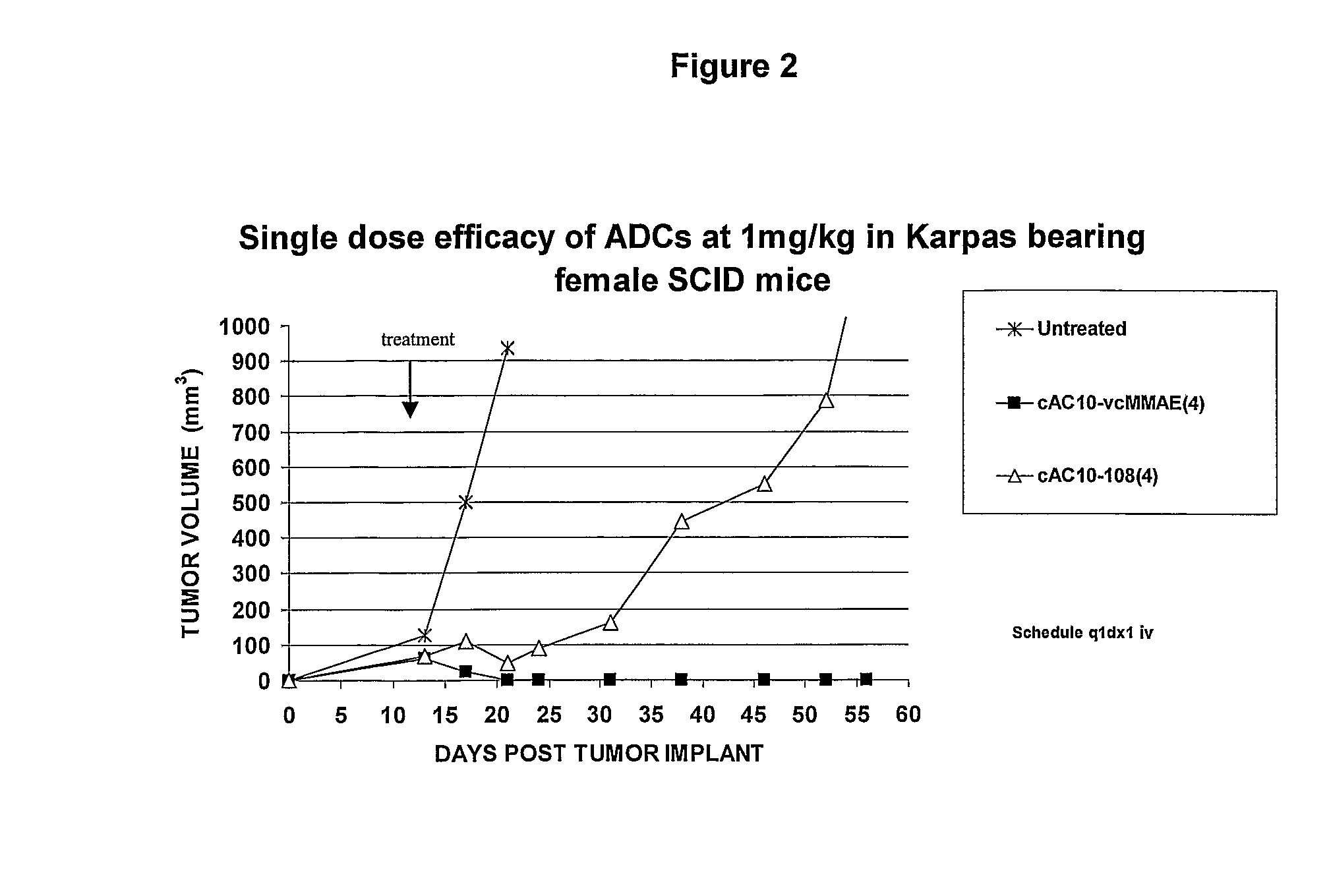Auristatins Having an Aminobenzoic Acid Unit at the N Terminus
a technology of aminobenzoic acid and auristatin, which is applied in the field of auristatins, can solve the problems of systemic delivery of the agent to cells and tissues of the body where it is unnecessary, adverse drug side effects, and limit the dos
- Summary
- Abstract
- Description
- Claims
- Application Information
AI Technical Summary
Problems solved by technology
Method used
Image
Examples
example 1
Preparation of 4-Abz-Val-Dil-Dap-Phe-OtBu
Compound 100
[0349]
[0350]To a room temperature suspension of Val-Dil-OtBu (1.17 g, 2.7 mmol) and Fmoc-4-Abz-OH in anhydrous DMF (5 mL) was added DEPC (0.82 mL, 5.4 mmol) and DIEA (1.88 mL, 10.8 mmol). HPLC analysis indicated complete reaction after 1 h. The reaction mixture was diluted with ethyl acetate (350 mL) and extracted sequentially with 0.1 M HCl (450 mL×2) and H2O (450 mL). The organic phase was concentrated in vacuo and filtered through a small plug of silica gel. Fmoc-4-Abz-Val-Dil-OtBu was isolated by preparatory RP-HPLC, using a Phenomenex C12 Synergi Max-RP 80A Column (250×50.00 mm). Eluent: linear gradient 10% to 90% MeCN / 0.05% TFA (aq) over 20 minutes, then isocratic 90% MeCN / 0.05% TFA (aq) for an additional 30 minutes. A total of 1.39 g of pure Fmoc-4-Abz-Val-Dil-OtBu (1.99 mmol, 74% yield) was obtained.
[0351]To a room temperature suspension of Fmoc-4-Abz-Val-Dil-OtBu (1.39 g, 1.99 mmol) in anhydrous CH2Cl2 (40 mL) was added T...
example 2
Preparation of MC-4-Abz-Val-Dil-Dap-Phe-OtBu
Compound 101
[0356]
[0357]To a room temperature suspension of compound 100 (150 mg, 0.189 mmol) and maleimidocaproic acid (MC-OH, 44 mg, 0.208 mmol, Molecular Biosciences, Inc., Boulder Colo.) in anhydrous CH2Cl2 (10 mL) was added HATU (101 mg, 0.265 mmol, 1.4 eq) and DIEA (0.13 mL, 0.756 mmol). After 16 h, the reaction was not complete, so additional reagents (0.567 mmol of MC-OH; 1.7 mmol of HATU; and 2.84 mmol of DI EA) were added over the following 72 h. Product was isolated by preparatory RP-HPLC, using a Phenomenex C12 Synergi Max-RP 80A Column (250×21.20 mm). Eluent: linear gradient 10% to 90% MeCN / 0.05% TFA (aq) over 20 minutes, then isocratic 90% MeCN / 0.05% TFA (aq) for an additional 30 minutes. MC-4-Abz-Val-Dil-Dap-Phe-OtBu was obtained in 42% yield (78 mg, 0.079 mmol). ES-MS m / z 987.19 [M+H]+; 985.26 [M−H]−.
example 3
Preparation of MC-4-Abz-Val-Dil-Dap-Phe
Compound 102
[0358]
[0359]To a room temperature suspension of compound 101 (70 mg, 0.071 mmol) in anhydrous CH2Cl2 (4 mL) was added TFA (2 mL). After 2 h, volatile organics were evaporated in vacuo, resulting in a pure white solid (66 mg, 0.071 mmol) which was used without purification. ES-MS m / z 931.26 [M+H]+; 929.33 [M−H]−.
PUM
| Property | Measurement | Unit |
|---|---|---|
| pH | aaaaa | aaaaa |
| weight | aaaaa | aaaaa |
| chemical | aaaaa | aaaaa |
Abstract
Description
Claims
Application Information
 Login to View More
Login to View More - R&D
- Intellectual Property
- Life Sciences
- Materials
- Tech Scout
- Unparalleled Data Quality
- Higher Quality Content
- 60% Fewer Hallucinations
Browse by: Latest US Patents, China's latest patents, Technical Efficacy Thesaurus, Application Domain, Technology Topic, Popular Technical Reports.
© 2025 PatSnap. All rights reserved.Legal|Privacy policy|Modern Slavery Act Transparency Statement|Sitemap|About US| Contact US: help@patsnap.com



